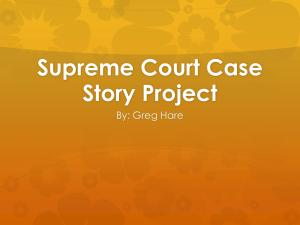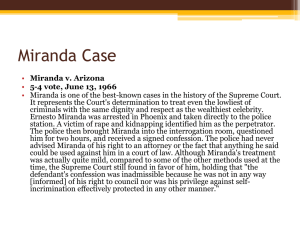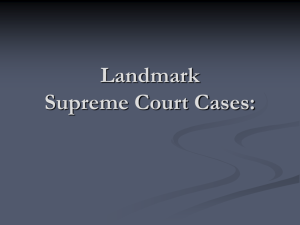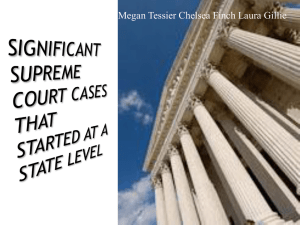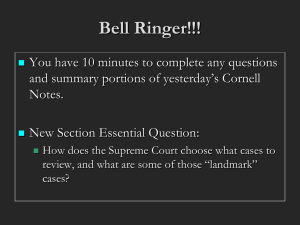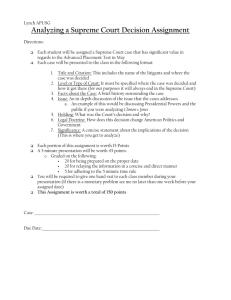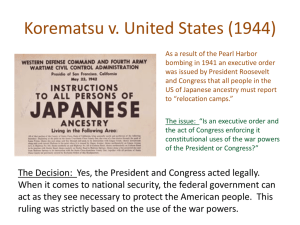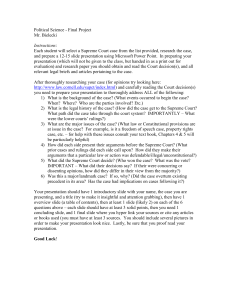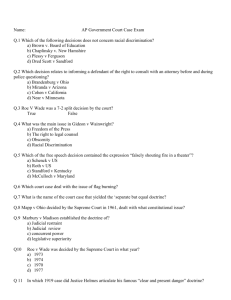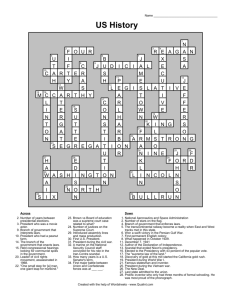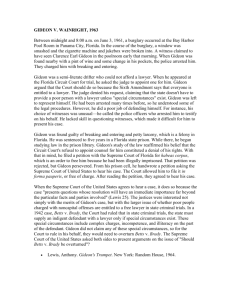Landmark Supreme Court Cases
advertisement
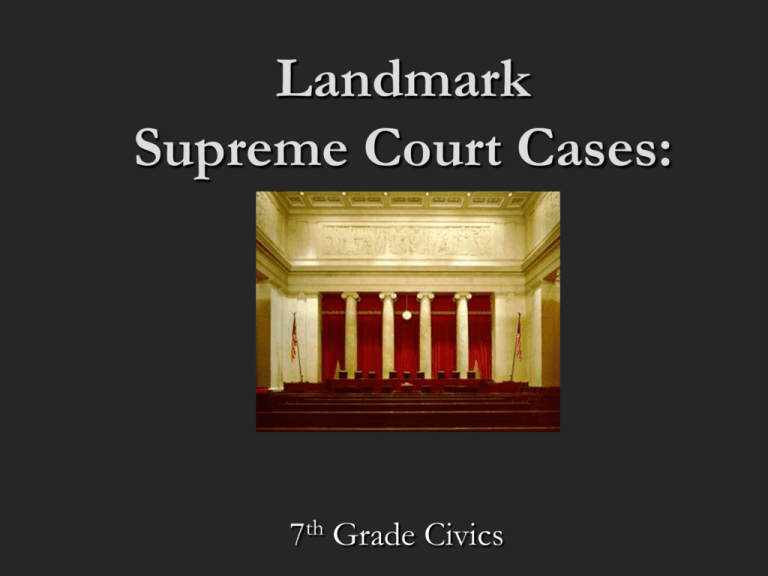
Landmark Supreme Court Cases: 7th Grade Civics Precedent Case A case that serves as a model for future cases. Example – Privacy rights 1965 – Griswold v. Connecticut – woman has a right to privacy when buying birth control 1973 – Roe. v. Wade – woman has a right to privacy when getting an abortion Precedents are useful for helping SC judges make opinions Marbury v. Madison (1803) The decision established “judicial review”: the evaluation of federal laws’ constitutionality as a power of the Supreme Court The Supreme Court has the ability to review laws, cases, decisions, etc. and judge their constitutionality. Major Check/Balance power against the other two branches Plessy v. Fergusson (1896): A Louisiana law required separate seating for white and African Americans on public railroads (segregation). --Herman Plessy said his 14th Amendment rights (Equal Protection Clause) had been violated. --The Supreme Court ruled that his rights were not violated, and segregated public facilities were permitted until 1954. - SEPARATE BUT EQUAL Brown v. Board of Education of Topeka (1954) 10-year-old, Linda Brown, was not allowed to attend her neighborhood school because she was African American. --Linda Brown said her 14th Amendment rights (Equal Protection Clause) had been violated. --The Supreme Court ruled that “separate but equal” segregation was a violation of the Equal Protection Clause. This decision overturned the precedent established by Plessy v. Ferguson in 1896. Mapp v. Ohio (1962): Dollree Mapp was convicted of having obscene materials in her home. Mapp appealed the conviction, saying that the police had violated her rights by entering her house without a warrant. The Supreme Court overturned the lower court’s decision, saying that the police had acted improperly, this excluding the evidence that they had found. “Exclusionary Rule”: excludes all evidence that is found in illegal police searched. Clarence Gideon Gideon v. Wainwright (1963): Clarence Gideon was found guilty of breaking and entering and sentenced him to 5 years in prison. Gideon appealed claiming that he did have the right to an attorney and the Supreme Court agreed Gideon received a new trial (with a court-appointed attorney) and was found not guilty. “The Gideon Rule”: guarantees counsel to all poor persons facing a felony charge (6th Amendment). Miranda v. Arizona (1966): Ernesto Miranda was arrested for kidnapping and sexual assault – he signed a full confession including a statement that he “had full knowledge of his legal rights.” Miranda appealed claiming that he had not received warning or legal counsel to guide his decision to confess. The Supreme Court agreed with Miranda, saying that all suspects must be forewarned that they have the right to remain silent and the right to an attorney. “Miranda Rule”: before a suspect is questioned by police, he/she must be: The Miranda Rights: 1. Told of their right to remain silent. 2. Warned that whatever they say may be used in court. 3. Informed of their right to an attorney. 4. Informed that an attorney will be provided if they cannot afford one. 5. Told that they can stop police questioning at any time. Roe v. Wade (1973) The issue in Roe v. Wade was not abortion; it was actually about privacy In Griswold v. Connecticut (1965), the SC found that a woman’s right to privacy is protected when she is looking for birth control In Roe v. Wade, the SC used Griswold as a precedent to uphold the practice of abortion However, states may make laws that regulate abortion Gregg v. Georgia (1976): Troy Gregg was sentenced to death after being found guilty of 2 counts of armed robbery and 2 counts of murder. Gregg appealed claiming that the sentence violated the “cruel and unusual punishment” clause of the 8th Amendment. The Supreme Court denied the appeal, stating for the first time that “the death penalty does not invariably violate the Constitution”. New Jersey v. T.L.O. (1985): T.L.O. (a New Jersey high school student) was sentenced to probation by juvenile court after a vice-principal searched her purse and found cigarettes and marijuana. T.L.O. appealed the ruling saying the principal’s search was unreasonable. The Supreme Court denied the appeal, saying that schools are allowed more leeway when conducting searches. The Court created a “reasonable suspicion” rule for schools conducting searches, instead of the “probable cause” rule that exists for the rest of society. Bush v. Gore (2000) The 2000 presidential election was one of the closest in history Race came down to Florida, which was having ballot issues – too close to call Gore was initially declared winner, but then Bush was announced winner Recount was requested by Gore, but stopped by the Supreme Court in a 5-4 decision. The Issue in Florida (2000) Bush v. Gore (con’t) Bush v. Gore was controversial for several reasons: Political question – generally, the SC stays out of political matters It decided the outcome of the 2000 election Serves as a precedent for future matters regarding electoral politics SC Case Review What were the main arguments/outcomes of each of the following cases? Miranda v. Arizona Plessy v. Fergusson Brown v. Board of Education Gregg v. Georgia Mapp v. Ohio TLO v. New Jersey Marbury v. Madison
